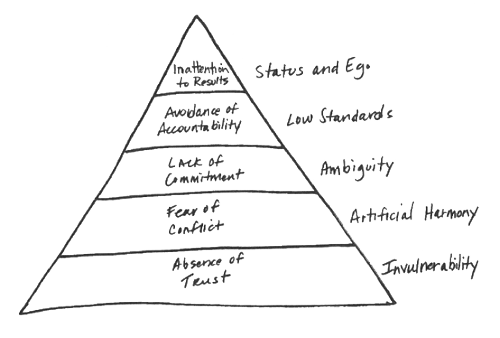
You aren’t feeling well. In fact you haven’t been feeling well for quite some time. You’ve tried every over-the-counter remedy available – you’re exercising more (sometimes), and eating healthier (mostly). While you might feel better for a day or two, soon you are back to feeling crummy again. You’ve finally decided to go to the doctor, knowing you need expert help. After explaining to your busy doctor what is going on, they recommend you try some over-the-counter remedies and maybe try to lose a little weight – you’ve really started to let yourself go. Your doc then excuses themself, they’ve got other patients waiting.
Let me retell this story, but change the players. You’re not feeling great at work. You are struggling to get along with a key partner. In fact you’ve been struggling with this person for quite some time. You’ve tried every solution you can think of – going along with this person’s ideas even though you know they are wrong, trying EXTRA HARD to get them to see why you are right, talking to other people in the organization to get them to help you get this person on board. While your relationship might improve for a day or two, soon you are back to feeling frustrated again. You’ve finally decided to go to your leader, knowing you need expert help. After explaining to your busy leader what is going on, they recommend you try talking to the person and maybe working on your “attitude” – you’re really getting a reputation for being a complainer. Your leader then excuses themself, they’ve got other work waiting.
While we are individually responsible for our own health, whether at home or at work, there are times when we aren’t able to resolve our own challenges, times when we need expert help. Without that help, it’s highly unlikely our situation will ever improve. And when we are talking about interpersonal dysfunction at work, the “sickness” can drag a whole team, department, and organization down, diminishing performance and morale, and shifting our focus from results to recriminations.
The brutal truth is, when leaders are “too busy” to really diagnose and address organizational and team health issues, their organization isn’t going to get any better, and will probably get worse. Leaders must prioritize the health of their people and organization. When they do, companies move from surviving to thriving.
As busy leaders are confronted with dysfunction, many of the “solutions” they apply are temporary bandaids – quick fixes. They try moving frictional teams into shared working spaces to “make them collaborate”. They try moving warring executives into neighboring offices to “force them to connect”. They try documenting aspirational “core values” of collaboration, respect, and trust in an attempt to reverse engineer culture.
But if an organization is suffering from dysfunction, these “over-the-counter remedies”, while temporarily distracting us from the pain, don’t deal with the long term problems. In healthy companies, leaders play a key role in helping reduce organizational friction by truly engaging and addressing dysfunction with their teams.
As Patrick Lencioni describes in “Five Dysfunctions of a Team”, dysfunction is a result of broken or absent trust between individuals and groups.
Without trust, the relationship cannot thrive, and as with a sick person, getting work done becomes harder and less important. Instead we focus on just making it through each day without exacerbating our pain and suffering. We are distracted, unfocused, and unhappy
Dysfunction constricts our ability to work effectively, and addressing that is absolutely the responsibility of leaders.
So, what can leaders do? There are 3 key activities that leaders should engage in to address dysfunction.
- Focus on this work as your priority.
- Gain empathy for the players. Create a safe space for them to share what is happening to them, by them, and around them. Seek to discover the root of the problem and the absence of trust.
- Collaborate with them on the long-term solution. While we all long for quick-fixes, the reality is that resolving dysfunction, just as with addressing long-term illness, requires a holistic approach over time.
Let me retell our story one more time, but with a different leadership response. You’re not feeling great at work. You are struggling to get along with a key partner. In fact you’ve been struggling with this person for quite some time. You’ve tried every solution you know about – going along with this person’s ideas even though you know they are wrong, trying EXTRA HARD to get them to see why you are right, talking to other people in the organization to get them to help you get this person on board. While your relationship might improve for a day or two, soon you are back to feeling frustrated again. You’ve finally decided to go to your leader, knowing you need expert help. After explaining to your busy leader what is going on, they refocus, and give you their full attention. They tell you that your ability to be a happy and productive member of this organization is their number one priority. They listen, and ask open ended questions, seeking to learn, not advise. They offer you their partnership and support in healing whatever ills are generating the dysfunction, and make a clear action plan with you to move forward. And they follow through on that action plan.
Leaders who recognize the long-term benefits of focusing on addressing dysfunction and keeping their teams and organizations healthy build teams that are focused on results and businesses that thrive. Are you enabling a sick organization through your inaction? Or, are you willing to make the health of your organization your priority?
Originally published on Collaboration Explored
